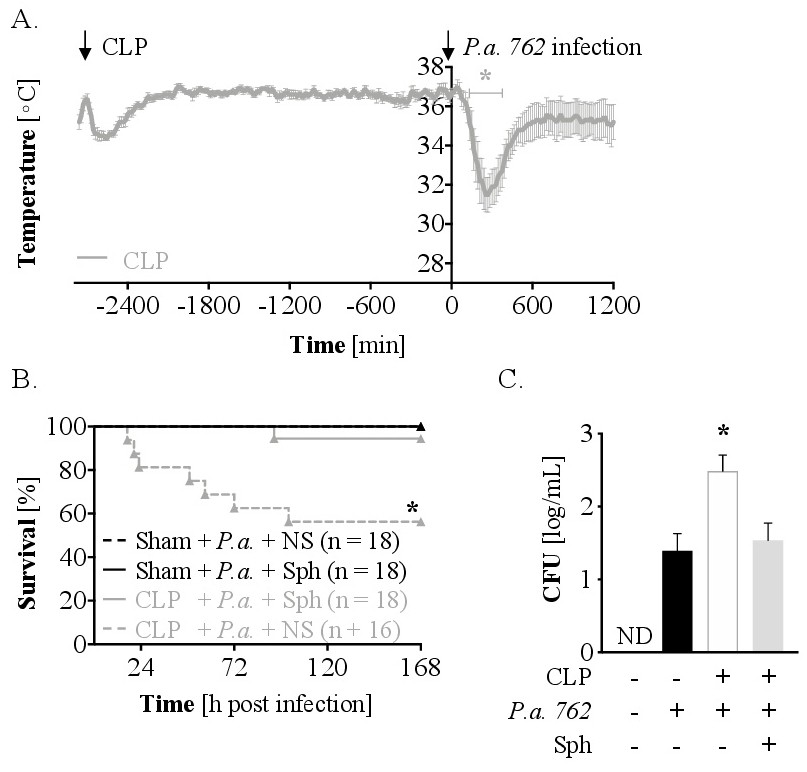Fig. 5. Sphingosine inhalation rescues septic mice from an established lung infection. (A) Mice were subjected to cecal ligation and puncture (CLP) and a temperature monitoring probe was inserted into the abdomen at time of the procedure. Core body temperature was electronically monitored every 15 minutes starting at the time of CLP. On d2 after CLP, mice were inoculated with 106 CFU P. aeruginosa 762. Monitoring of core body temperature continued until the mice were sacrificed 20 h after the infection. n = 7 mice. * p<0.05 vs temperature at time 0 (two-way repeated-measures ANOVA with Dunnett posttest). (B) Mice underwent CLP and were infected with P. aeruginosa 2 days later. 2.5 h after infection, mice were inhaled with either sphingosine or normal saline and survival was monitored. n = 16-18 mice/group spread across three biologically independent experiments. * p<0.05 CLP + P.a. + NS vs all other groups (log-rank test). (C) Airway bacterial loads were determined by bronchoalveolar lavage 90 minutes after sphingosine or normal saline inhalation. ND: not detected. n = 18-20 mice/group spread across three biologically independent experiments. * p<0.05 CLP(+) P.a.(+) Sph(-) vs all other groups.
